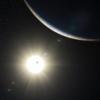

| Visitors Now: | |
| Total Visits: | |
| Total Stories: |

By Extinction Protocol: 2012 Earthchanges and News Event (Reporter)
Contributor profile | More stories
Contributor profile | More stories
| Story Views | |
| Now: | |
| Last Hour: | |
| Last 24 Hours: | |
| Total: | |
Best meteor shower of the year coming in December
Saturday, December 1, 2012 4:10
% of readers think this story is Fact. Add your two cents.
 December 1, 2012 – SPACE – Mild comfortable nights of observing are now behind us. As we approach the Winter Solstice on December 21 at 6:12am (the earliest date and time for this astronomical event since 1896), our days grow shorter while the nights grow longer. Amateur astronomers like the early sunsets and the longer nighttime skies, but the cold temperatures can shorten one’s observing session quite effectively. However, unless we get slammed with frequent and fast moving weather fronts during meteorological winter (December thru February), the skies can be very clear and transparent. For those of you who own telescopes of any size should take that opportunity to focus your instruments on the planet Jupiter. On December 1, this Jovian world will be at its closest distance to the Earth. Though still just over 378,000,000 miles away, Jupiter and his four Galilean moons reveal a lot of detail to even a casual observer using a telescope. On that date this fifth planet from the Sun can be found to the left of the Hyades asterism in Taurus, and almost five degrees from Aldebaran, the red star that marks the eye of the bull. While Jupiter will be observable for the next several months, the upcoming Geminid meteor shower will peak on the night of December 13-14 (Thursday night to Friday morning). The Geminids are currently the best meteor shower of the year for northern hemisphere viewers, and the New Moon will not be present to brighten the sky. Therefore, from a dark sky location an observer should potentially observe 60+ meteors per hour at peak, which is predicted to occur sometime between midnight and 4:00am EST. But for those of you who don’t wish to observe into the wee hours of the morning, the Geminids do provide observers an opportunity to see a decent display during the pre-midnight hours. Why? Gemini, the constellation from where the shooting stars appear to radiate, is about 30 degrees above the eastern horizon by 9:00pm. You’ll know you’ve seen a Geminid if you can trace the origin of the meteor’s trail back to the radiant point near Gemini’s brightest stars, Castor and Pollux. –Go Local
December 1, 2012 – SPACE – Mild comfortable nights of observing are now behind us. As we approach the Winter Solstice on December 21 at 6:12am (the earliest date and time for this astronomical event since 1896), our days grow shorter while the nights grow longer. Amateur astronomers like the early sunsets and the longer nighttime skies, but the cold temperatures can shorten one’s observing session quite effectively. However, unless we get slammed with frequent and fast moving weather fronts during meteorological winter (December thru February), the skies can be very clear and transparent. For those of you who own telescopes of any size should take that opportunity to focus your instruments on the planet Jupiter. On December 1, this Jovian world will be at its closest distance to the Earth. Though still just over 378,000,000 miles away, Jupiter and his four Galilean moons reveal a lot of detail to even a casual observer using a telescope. On that date this fifth planet from the Sun can be found to the left of the Hyades asterism in Taurus, and almost five degrees from Aldebaran, the red star that marks the eye of the bull. While Jupiter will be observable for the next several months, the upcoming Geminid meteor shower will peak on the night of December 13-14 (Thursday night to Friday morning). The Geminids are currently the best meteor shower of the year for northern hemisphere viewers, and the New Moon will not be present to brighten the sky. Therefore, from a dark sky location an observer should potentially observe 60+ meteors per hour at peak, which is predicted to occur sometime between midnight and 4:00am EST. But for those of you who don’t wish to observe into the wee hours of the morning, the Geminids do provide observers an opportunity to see a decent display during the pre-midnight hours. Why? Gemini, the constellation from where the shooting stars appear to radiate, is about 30 degrees above the eastern horizon by 9:00pm. You’ll know you’ve seen a Geminid if you can trace the origin of the meteor’s trail back to the radiant point near Gemini’s brightest stars, Castor and Pollux. –Go Local
2012-12-01 04:01:18
Source:




triffids landing early in time for the 21 dec? ( ok this is a joke, but then again..)